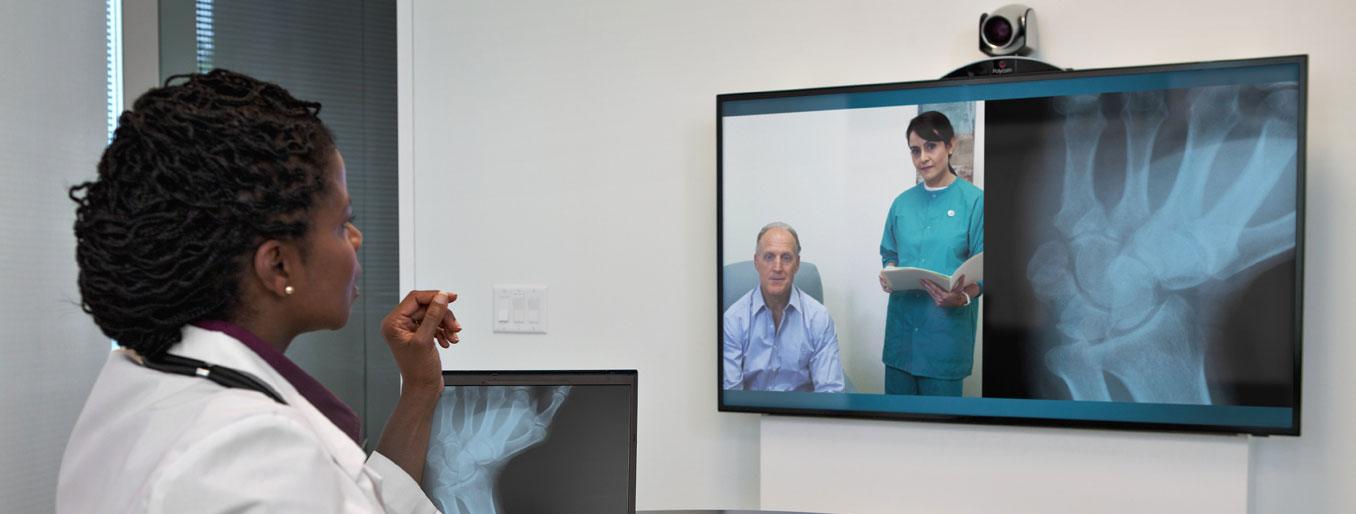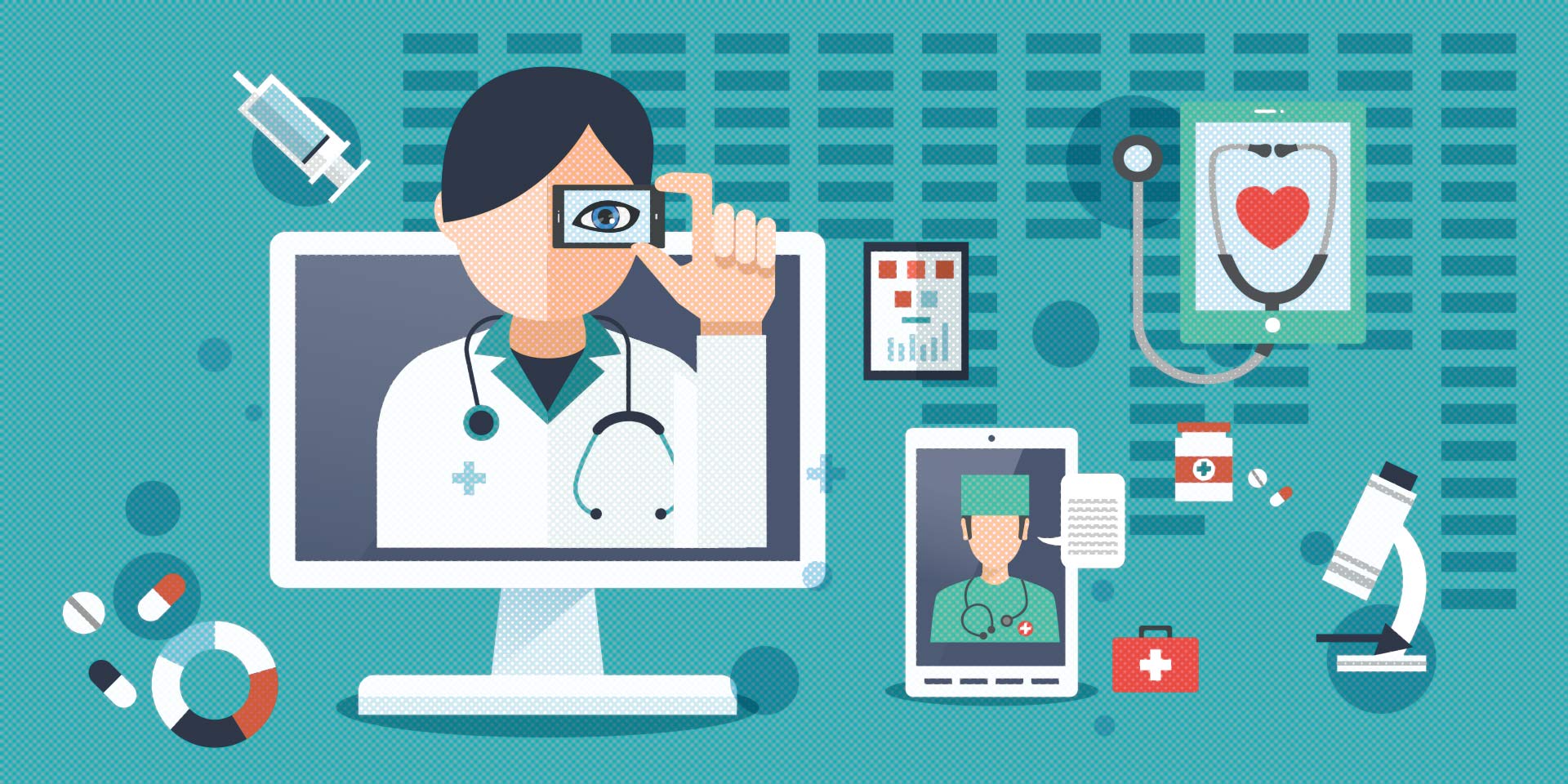
A video call with a patient in another city or country may have seemed like a far-fetched idea a decade ago. Yet, with technology growing by leaps and bounds, telehealth is here and revolutionizing healthcare. Clinics, hospitals and health providers have started to adopt telemedicine and made it a part of their medical practice, extending a helping hand to more patients than ever before.
The last few years have seen immense development in telehealth technology. Specialized screening and diagnostic devices, cameras, monitors and sensors, all of which feeds patient data and health metrics into telemedicine software. This has helped doctors gain a greater understanding of their patient’s health. Unlike a regular video call, telemedicine offers a reliable means of assessing health and treating patients remotely as it based on health data sharing and communication.
As with any new technology, there are often benefits and limitations associated with it. Let’s take a look at some of these in more detail.
Benefits of mobile telehealth services
- Limits travel for patients as they can remotely consult with their doctors
- Follow-up care is a lot easier with telehealth services. This ensures that patients diligently check-in with their doctors without having to visit their clinic
- Extends care to rural areas where accessibility to health services may be limited. A good internet connection and smartphone is all that is needed for volunteers or medical personnel to get help for patients in rural areas
- Continuous health monitoring is possible with mobile telehealth. Both providers and patients can connect and engage with each other at any time, wherever they may be to ensure that the patient’s health parameters are being tracked.
- Mobile telehealth services prevent patients from falling ill by limiting their exposure to infections which they may otherwise encounter during hospital visits.
- Minimal infrastructural requirements needed for mobile telehealth. A good internet connection and smartphone with a front camera is all providers and patients need to carry out a video consultation to discuss health concerns.
- This service allows patients access to specialist care (Eg. To oncologists, radiologists, kidney specialists, surgeons etc.) which may not be available to them in their city. This is particularly useful for providers for medical tourism, to consult with patients planning to visit them from other countries for medical care and for post-treatment follow-up.
- In addition to reducing time, mobile telehealth services also reduce healthcare costs. Continuous care means improved health outcomes for patients and increased referrals for doctors, generating more revenue.
- Video consultation services on mobile require minimal training for doctors to use, similar to FaceTime and Skype calls
- Limits the volume of phone calls, text messages, and emails that providers often need to address from patients. Defining booking slots for appointments ensures you would not need to answer patient calls round-the-clock.
- Unlike other online consultations, video consultations on mobile allow providers to have audio-visual communication with their patients. This way they are able to see and talk to patients in real-time, view their health reports and make an assessment of their health.
- Telehealth services on the mobile can also be charged. Providers can set consultation fees and collect payments for consultations to ensure they are suitably compensated for their time.
Drawbacks of mobile telehealth services
- It requires a reasonably strong and reliable mobile internet connection for the video consultation to go smoothly. This may be a concern in areas with limited or poor network connection.
- It can be argued that telehealth services reduce human interaction and that assurance that comes from a doctor’s touch.
- Mobile telehealth is preferable between providers and their existing patients. It is easier for doctors who have an understanding of the patient’s history to provide treatment suggestions.
- It’s important to have a quiet environment without any background disturbances to be able to properly communicate with patients. This can be difficult sometimes for video consultations on the mobile.
- The size of the mobile screen sometimes makes it a challenge for providers to properly view and assess their patient and review their health records.
- Insurance coverage for video consultations and telemedicine has still been a matter of debate. It is still unclear whether patients can claim reimbursements for mobile telehealth services.
Telehealth on the mobile has made it easier for providers to communicate and engage with patients. Due to the mobility it offers, it helps providers manage their time better and also see more patients. For patients, mobile video consultations and telehealth services are an effective time and cost-saving means of communicating with their doctors, between clinic visits.
The Virtual Practice telemedicine offering includes appointment booking and video consultations through the web or mobile application. In addition to being easy-to-use, access to Personal Health Records (PHR) during video consultation sessions gives doctors more insight into their patient’s health. They can also prescribe new medication and provide treatment advice which will be emailed to the patient as a consultation summary after the session, to reduce non-adherence and improve health outcomes.




